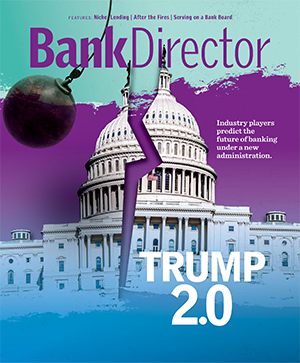
Driving Accountability in Incentive Compensation Governance

To drive accountability, it is important to document and “show your work” when it comes to governance of incentive compensation plans and processes. The largest banks, due to increased regulatory oversight, have made significant strides in complying with regulators’ guidance and creating robust accountability. Here are some resulting “better practices” that provide food for thought for banks of all sizes.
While the 2010 interagency guidance on sound incentive compensation policies is almost a decade old, it remains the foundation for regulatory oversight on the matter. The guidance outlined three lasting principles for the banking industry:
- Provide employees incentives that appropriately balance risk and reward.
- Create policies that are compatible with effective controls and risk management.
- Support policies through strong corporate governance, including active and effective oversight by the organization’s board of directors.
Most organizations used the release of the 2010 guidance to take a fresh look at their incentive plans. It proposed a non-exhaustive list of risk-balancing methods, such as risk adjustment of awards and deferral of payment. Many banks changed their plan structures and provisions to increase sensitivity to, and better account for, risk. The changes made sense pragmatically but largely addressed only the first principle.
After the financial crisis, boards were expected to engage in the oversight and review of all incentive arrangements to ensure that they were not rewarding imprudent risk taking. However, most institutions quickly realized it was not practical for directors to be in the weeds of all their broad-based incentive plans and thus delegated that task to management.
Compensation committees outlined expectations for senior management regarding incentive plan creation, administration and monitoring in a formal document. Their expectations would include, for example, the process for reviewing incentive plan risk.
Comp, Risk Committees Cooperate
Banks also developed stronger communication or information sharing between the compensation and risk committees of the board. This was sometimes accomplished through cross-pollinating members between the committees or conducting joint meetings on the topic. It also became standard for the chief risk officer to participate in compensation committee meetings and present on incentive compensation risk, as well as the overall risk profile of the organization.
Incentive compensation review committees, made up of the most-senior control function heads such as the chief financial officer, chief human resource officer, general counsel and chief risk officer, are often delegated primary oversight responsibilities. To create accountability, this management committee operates under a formal charter, oversees the entire governance process, provides for credible challenges throughout and annually approves all non-executive plans. A summary of their activities and findings is presented to the compensation committee annually, at minimum.
Working groups representing various business lines and broad control functions support the management committee in actively monitoring incentive compensation plans. Every activity in the governance process—from plan creation or modification to risk reviews and back-testing—has a documented process map with roles and responsibilities.
These large bank practices might be overkill for smaller organizations. However, some level of documentation and process formalization is a healthy process for any size. My advice: Don’t get fixated on the red tape, as proper governance and controls can be scaled to the size and complexity of each individual bank.
Formalize the Process
The second and third principles of the 2010 guidance are aimed at driving greater accountability and efficient oversight, including enhanced information sharing. Formalizing the process simply helps to crystalize expectations for those involved and safeguards against the dodging of responsibilities.
Plus, regulators—just like that math teacher—want to see the work. It’s not enough to simply have the right answer. You must be able to document the process you went through to get there.


